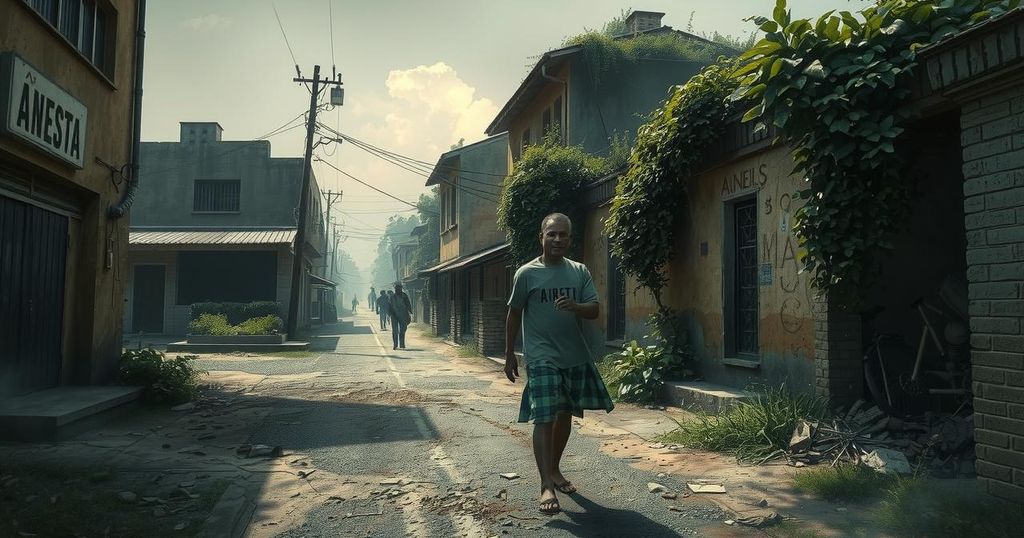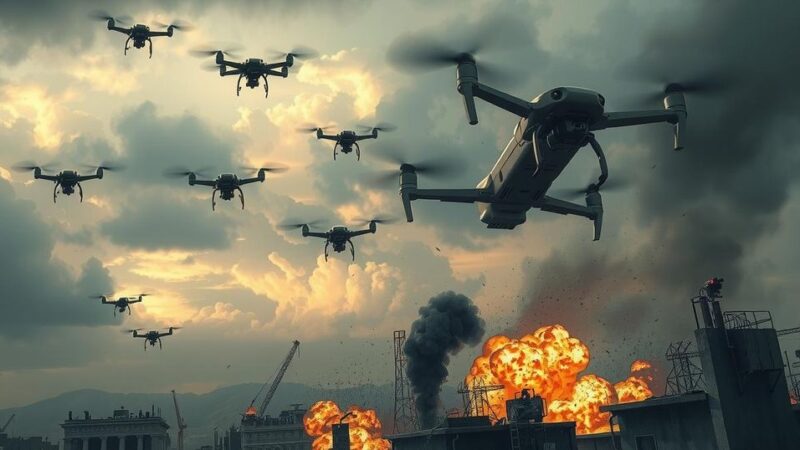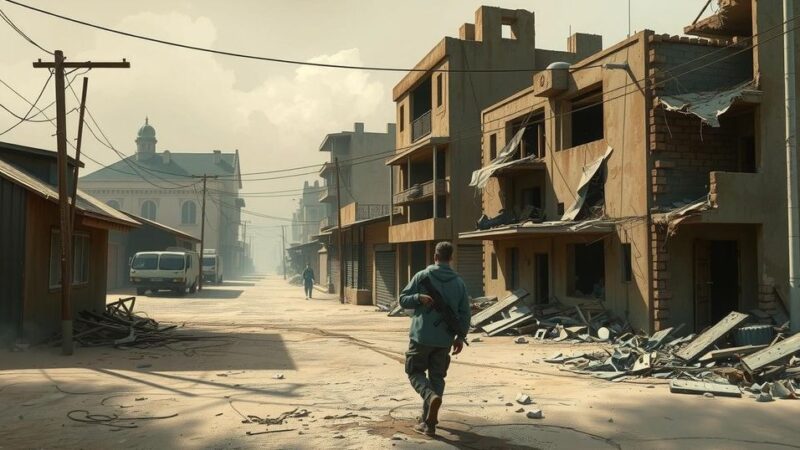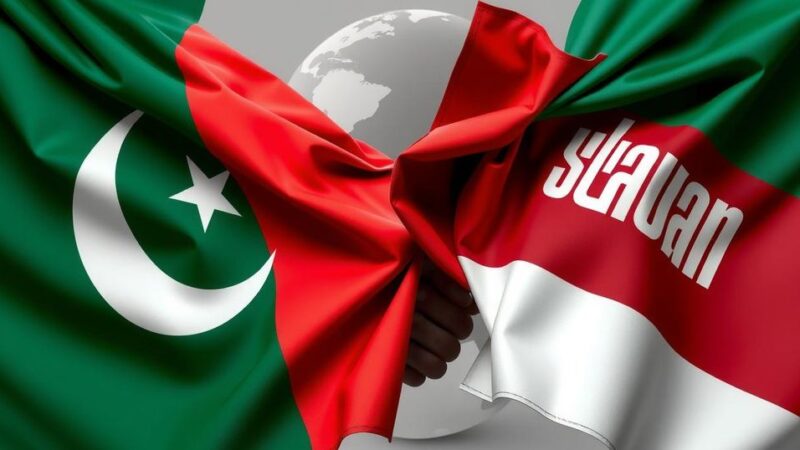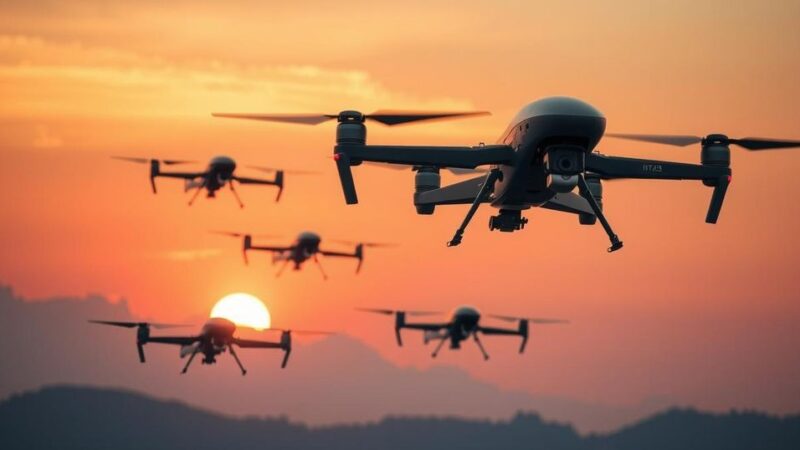Goma, DRC, struggles under the aftermath of the M23 rebel group’s control as daily life remains disrupted. The city’s takeover has recalled traumatic memories for residents since heavy fighting led to numerous casualties and displacement. Humanitarian needs escalate as violence persists despite a declared ceasefire, leaving Goma in a fragile state under the shadow of ongoing conflict.
In Goma, a city with a rich history that sprawls beneath the shadow of Mount Nyiragongo, the once lively environment now stands under a suffocating calm. Following the March 23 Movement (M23) rebel group’s takeover in late January, residents face profound disruption in their daily lives. The turbulent events have resurfaced old wounds, reminiscent of Goma’s previous clashes with the very same group in 2012, leaving a lasting impact on the over two million inhabitants.
The M23 fighters advanced into Goma on January 27 and swiftly declared control of the city. This marked a troubling development in an already tense situation that has plagued eastern Congo for decades. Heavy fighting erupted almost immediately, transforming Goma into a battleground. Reports indicate that more than 8,500 individuals lost their lives, with nearly 5,600 others sustaining injuries amidst shelling that ravaged residential neighborhoods and critical infrastructure like the airport and radio stations.
Despite the M23 announcing a “humanitarian ceasefire” on February 4, sporadic violence has persisted throughout North and South Kivu provinces. They recently seized Bukavu, the South Kivu capital, and have established an extensive network of frontline positions across the region. Analysts caution that the dynamics of this current conflict may be more entrenched than those that preceded it.
Prominent political figures, like Corneille Nangaa, formerly the head of the electoral commission, have voiced ambitious plans for the M23, stating their desire to “liberate the entire country,” which includes Kinshasa, the national capital. This declaration prolongs the uncertainty for Goma and its inhabitants, who are yearning for stability.
The aftermath of Goma’s fall has been marked by a grim silence. Although gunfire has subsided, chaos and oppression are widespread. No longer lively, once-bustling commercial areas lie deserted, and the banking system is in shambles, leading to crippling cash shortages. Rising crime rates in this uneasy environment compound the pressure on the communities, who are left vulnerable amidst the absence of government institutions.
The International Organization for Migration reports disturbing statistics, noting that over 1.2 million individuals have been newly displaced in Kivu provinces since the beginning of the year. Those who initially sought asylum in Goma have been forced to flee once again due to the escalating violence.
In February, the M23 issued an ultimatum demanding the removal of major displacement camps like Bulengo and Lushagala. Within mere hours, camp residents fled, carrying scant belongings. Sadly, many returned to villages reduced to ruins with roads impassable.
The town of Sake, located approximately 27 kilometers west of Goma, has been a focal point for intense fighting between M23 militants and Congolese forces since late 2023. The situation is dire—either side of the conflict has left Sake deeply scarred. This relentless violence continues to pose severe risks; unexploded ordnance is still prevalent in nearby fields, causing the deaths of civilians, particularly children.
Moreover, Ndosho Hospital, the only facility caring for the injured in western Goma, is stretched thin. Supported by the International Committee of the Red Cross (ICRC), the hospital operates under immense pressure as it tackles the complexities of the region’s conflict. Taoffic Mohamed Toure, an experienced ICRC veteran, emphasized the unique challenges of operating in such a hostile environment, citing “the sheer number of actors” involved.
As hopes for diplomatic resolutions dim and ceasefires crumble, the residents of eastern DRC continue to endure the shadow of relentless conflict. In Goma, where lava from Nyiragongo cooled into black rock, the scars of repeated wars have yet to heal.
The situation in Goma and the surrounding areas of eastern DRC paints a stark picture of the ongoing conflict. The M23 rebel group’s actions continue to inflict significant suffering on the local population, highlighting the complexities of the situation that entrap the region in violence and instability. With humanitarian conditions deteriorating, the plight of the people remains critical as they navigate the remnants of war.
Original Source: english.news.cn
